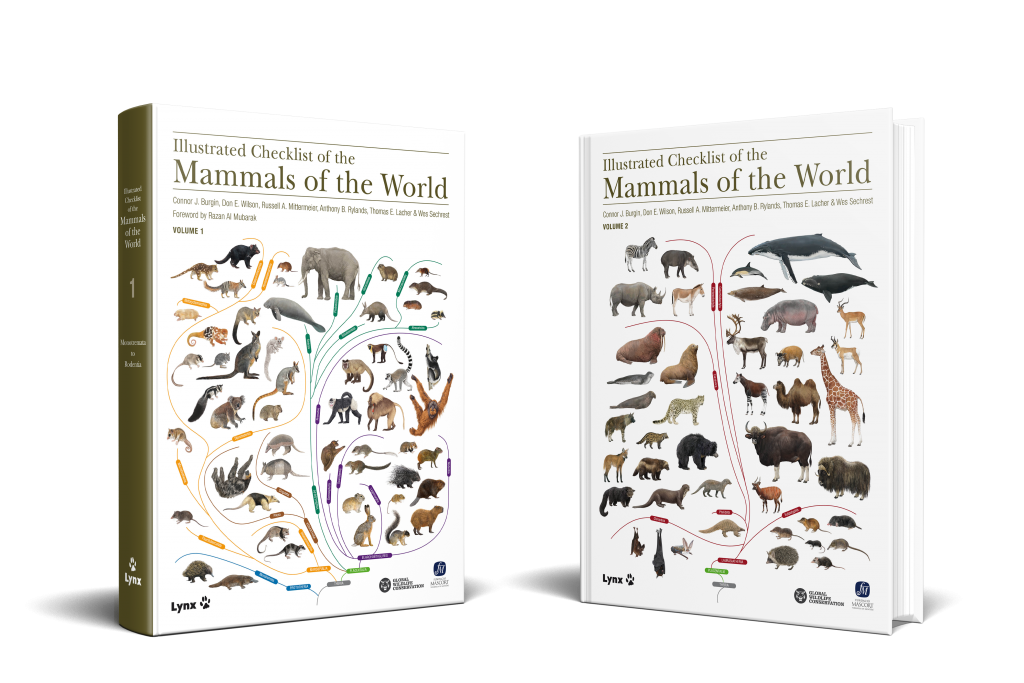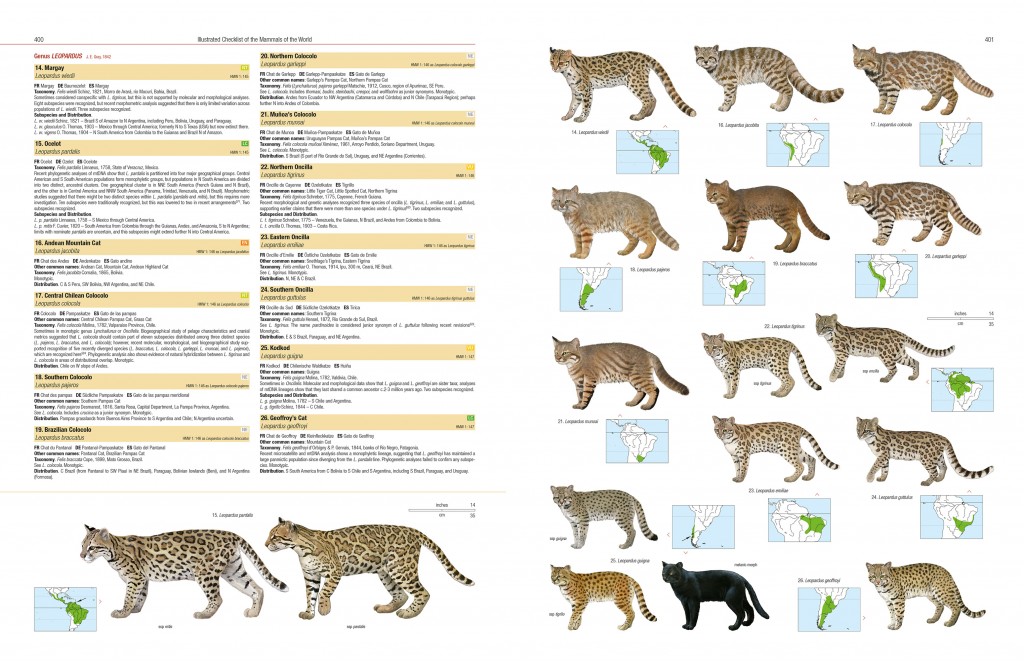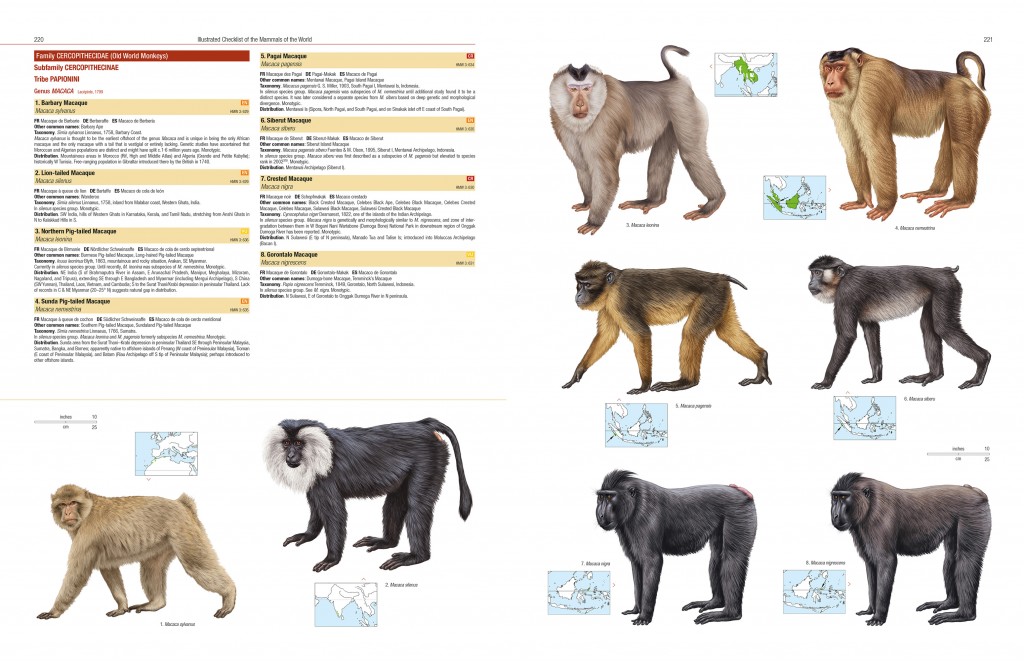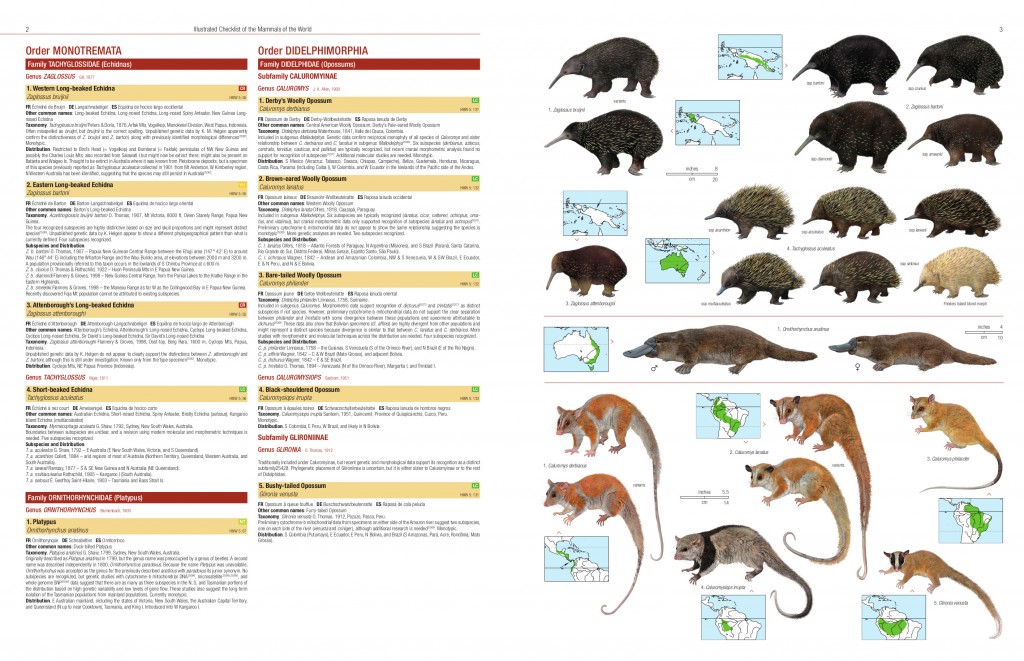New Book: Illustrated Checklist of the Mammals of the World

Now this is exciting. The brand new Illustrated Checklist of the Mammals of the World just arrived and it is a thing of beauty.
This two volume set covers more than 6550 mammal species. Each is illustrated and comes with an updated range map, IUCN conservation status, taxonomic notes and common names in English, French, Spanish and German. There is also information about many subspecies along with a helpful chapter on the latest thinking in mammal taxonomy.

The books are constructed from the foundations of the Handbooks of the Mammals of the World though 180 additional species – described after the Handbooks were published – are included here. So this is as current as you can get: indeed, the checklist includes more than 1000 species that were unknown to science 15 years ago.
The checklist features more than 7,150 illustrations. Many were in the handbooks, but there are 700 new illustrations of primates and more than 100 covering other groups.
I imagine that many of those who have already invested in the entire 9 volume set will want to add this to their collection. And if you didn’t get the handbooks then this is a more affordable alternative. It is still quite expensive – currently 180 euros for the two book set – though that works out to less than 3 cents a species.

While many of the illustrations from the handbooks have been used again, many of the primate plates have been redrawn.
This is an absolute treasure of a book and just in time for the holidays!
My big dilemma now is whether to go through it with a pencil and mark off all the species I have seen. Strangely enough I suspect I am going to find it hard to resist the urge for a ticking frenzy.
Available from Lynx publishers at https://www.lynxeds.com/product/illustrated-checklist-of-the-mammals-of-the-world/ and elsewhere.

9 Comments
-
Joshua
According to Buteo Books, the set will be released in the US 11 November 2020, with a current pre-order price of $235.00.
I only own the first two volumes of HBMW because that covers the groups where my main interests lie. I am unlikely to complete the set due to budget constraints and lack of interest, but this might be a reasonable substitute to completing the set.
-
Mustela
I’m so excited about this book, but it has not arrived yet. I don’t have the HMW series, so I bought it at the end of August.
I just hope they managed to recognize and illustrate Peromyscus bakeri, P. carolpattonae, Cryptotis eckerlini, C. matsoni, and C. montecristo (all being probably doubtful splits, but whatever). -
Maurice Tijm
This book must be amazing. An unique and important book! The knowledge and overview on mammals really skyrocketed the last 15 years.
I first want to read more in and earn back my hmw collection though before i buy it. Lynx spit out this alternative right after completion of the series. Jon I fully understand you cant hesitate to tick in these books you have a lot to mark off! For me there would be so many pages without a pencil strike. What I therefore in general enjoy more in terms of marking off is comparing a personal trip list with other trip lists: trip lists species are the see-able species in a country. I dont do it for competition but to get the feeling you have seen a great selection of the see-able mammals and therefore the best possible impression of the countries mammals. Damn how I miss the mammalwatching! -
Steph
We received our copy today (yes – it was delivered on a Sunday!) – absolutely gorgeous book, and full of info for those of us who can’t afford the 9 volume HBM.
They should have added the subtle pale grey tick box squares next to the illustrations, like they have in the similar “All the Birds of the World” so that Jon can satisfy his ticking itch!
-
Rob
In the bird version I decided to sticker them with green (seen) and blue (heard only) round stickers with a 8mm diameter. Great thing to do, and it still looks neat and uniform!:) Better option than pencil ticking imo.
Leave a Reply
You must be logged in to post a comment.


Vladimir Dinets
Wow, their list has about a 1000 more species than mine. I guess they still stick with all those fake splits of ungulates and primates.